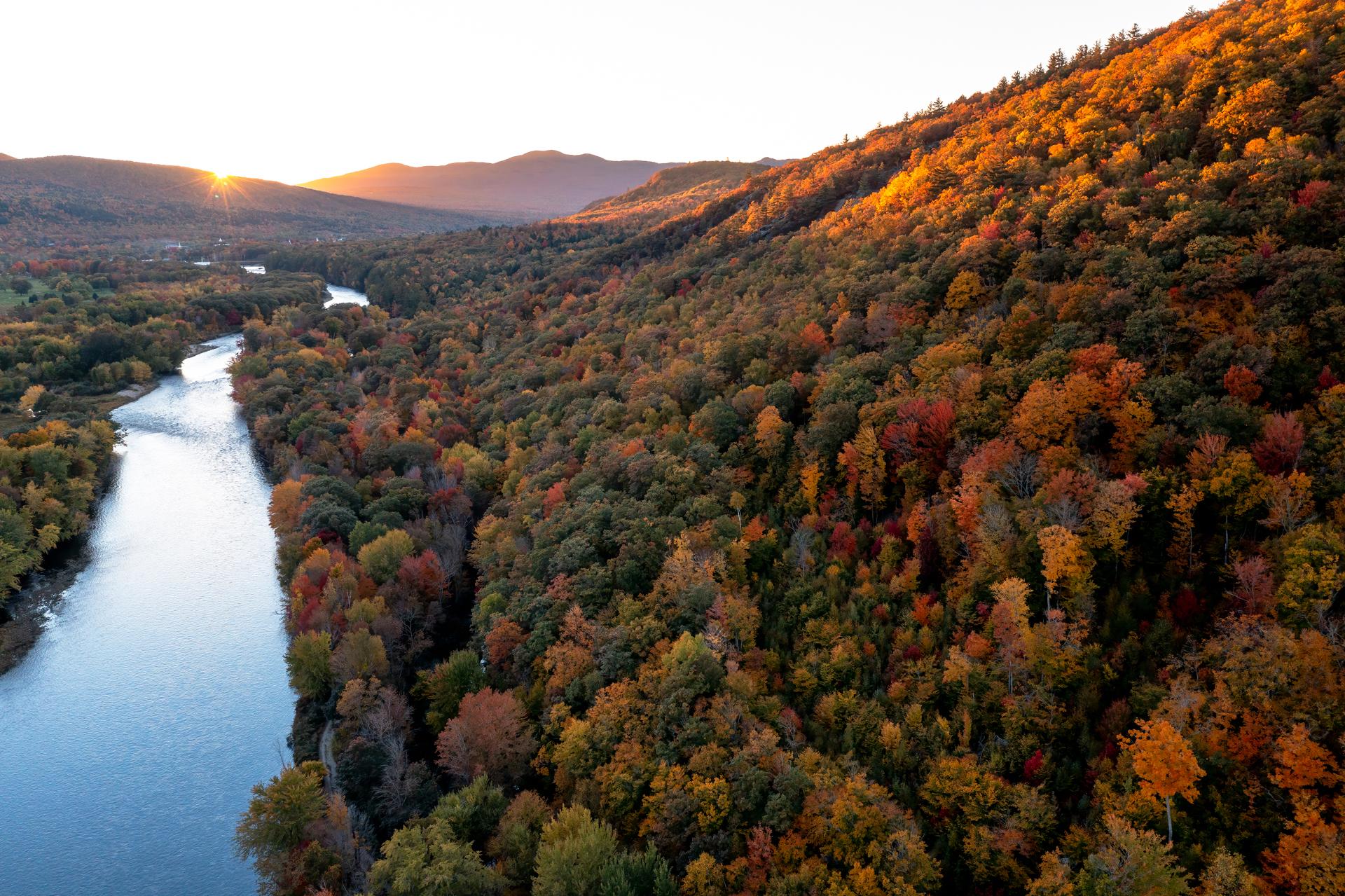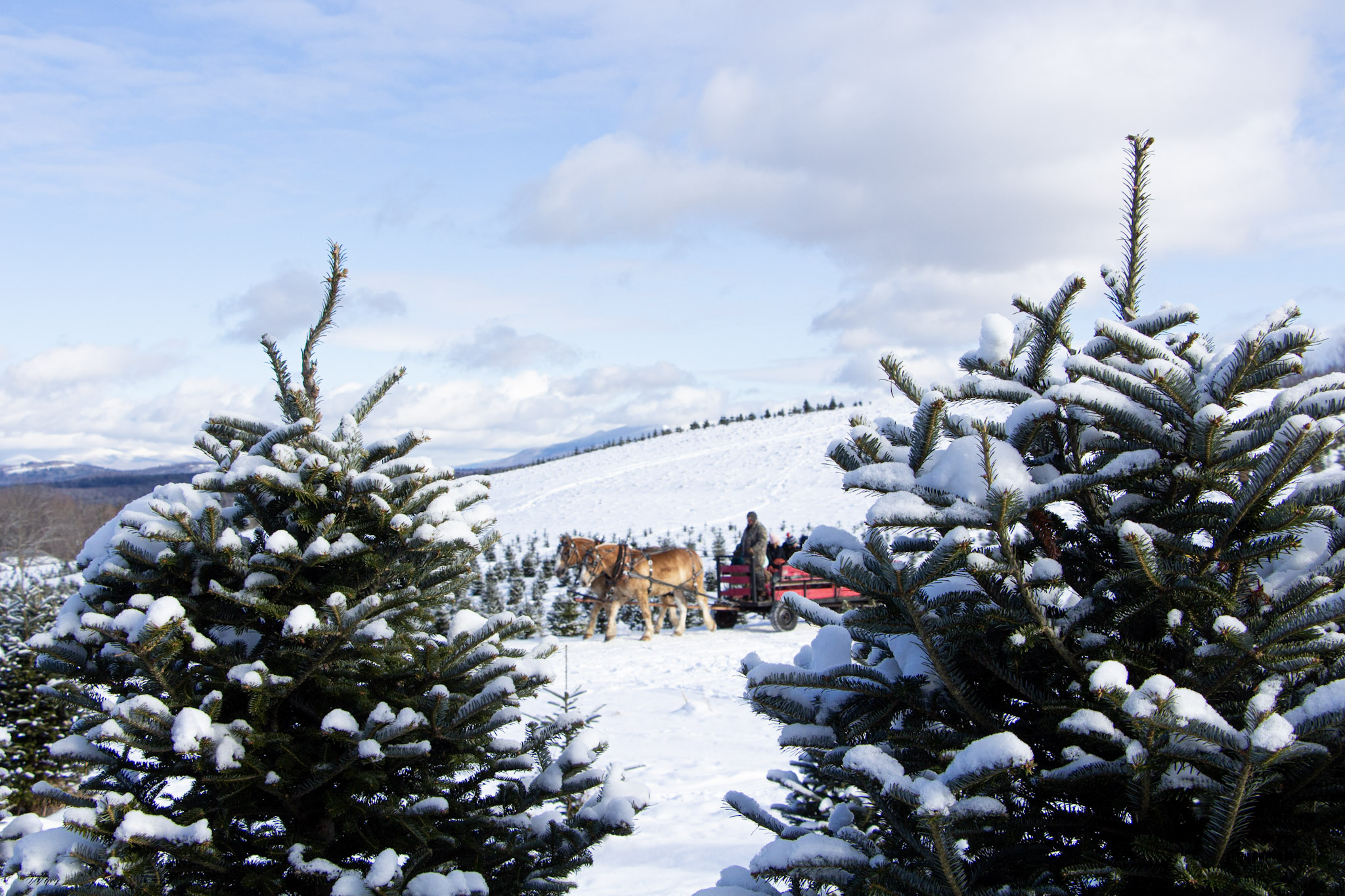- Tags:
- Advocacy,
- Climate,
- Wildlife,
- Clean Water,
- Forest Journal

Shelburne Forest, courtesy of Ryan Smith
If you’ve ever stood at the edge of a field and watched the sun rise behind a wall of pines or listened to the hush of snow falling through the branches on a favorite trail, you know that New Hampshire’s open spaces are part of what makes this state feel like home.
But it turns out these lands do more than offer inspiration, spaces to recreate, and a sense of place. A new report released this spring, The Benefits of New Hampshire’s Open Space, puts hard numbers to something many of us have felt intuitively: our forests, farms, and waters are not only beautiful — they are essential and valuable infrastructure.
Conducted by the Primrose Research Group and supported by a coalition of land and conservation partners across the state, the study shows that open space and working lands in New Hampshire supports a $3.9 billion outdoor recreation economy, protects clean drinking water for thousands of households, and provides billions in annual economic activity from agriculture and forestry.
“This report shows that land conservation is not just about protecting scenery,” said Matt Leahy, Public Policy Director of the Forest Society. “It’s about protecting public health, local economies, and our way of life.”
Some of the findings are stunning:
- The forest products industry contributes $2.5 billion in output and 12,800 jobs
- Farmland supports 7,940 jobs and produces more than $500 million in economic value
- Outdoor recreation, from hunting and hiking to snowmobiling, accounts for 32,000 jobs
- Conserved lands in a single watershed saved over $40 million in water treatment costs over 10 years
And yet, we’re losing an estimated 5,000 acres of forestland to development each year. That’s not just a loss of views or habitat — it's a loss of clean air, climate resilience, working lands, and public access.
“We rely on these natural systems to do so much,” said Jim O’Brien, Deputy State Director at The Nature Conservancy in New Hampshire. “They safeguard clean water, cool our neighborhoods, clean our air, store carbon, and reduce flooding. But it takes sustained efforts to ensure that these benefits continue for New Hampshire residents, businesses, and visitors.”
The report doesn’t just look at numbers. It also shares local stories: families like the Williamses of Sullivan Farm, who placed a conservation easement on the last working farm in Nashua. Or the community of Randolph, where the town-managed Randolph Community Forest offers both sustainable timber harvests and a haven for recreation and wildlife.
“New Hampshire’s wildlife populations depend on the diversity of habitats within the State’s undeveloped lands to find food and shelter and raise their young,” said Doug Bechtel, President of New Hampshire Audubon. “Interconnected open spaces enable animals to travel safely across the landscape during dispersal and seasonal movements.”
“Current use assessment is a key public policy in New Hampshire that helps ensure our forestland, farmland, and open natural spaces are preserved", said Charles Levesque, chair of the Statewide Program of Action to Conserve Our Environment - NH's Current Use Coalition. "Without current use, many forest and farm landowners would be forced to develop their land due to high property taxes. The fact that we have over 3 million acres in current use speaks to the importance of that law," Levesque concluded.
“This report powerfully confirms that conserving land is not just good for nature, it’s essential for strong, thriving communities,” said Brian Hart, Executive Director at Southeast Land Trust of New Hampshire. “At SELT, we see firsthand how conserved land improves lives — from protecting water supplies to providing recreation.”
As the Forest Society approaches its 125th anniversary next year, we’re reflecting with our partners on what generations of conservation have made possible — and what it will take to ensure those benefits continue. This report is more than a snapshot of where we are today. It’s a call to think boldly about the future of New Hampshire’s landscapes, communities, and economy.
By keeping forests as forests and agricultural land in production, we invest in clean air water, rural livelihoods, climate resilience, and a quality of life that draws people to live, work, visit, and stay in the Granite State. With renewed commitment, collaboration, and care, we can ensure that natural and working lands keep serving New Hampshire — today and for future generations.
You can read the full report and explore the findings at https://www.forestsociety.org/page/why-open-space-matters-more-ever.
